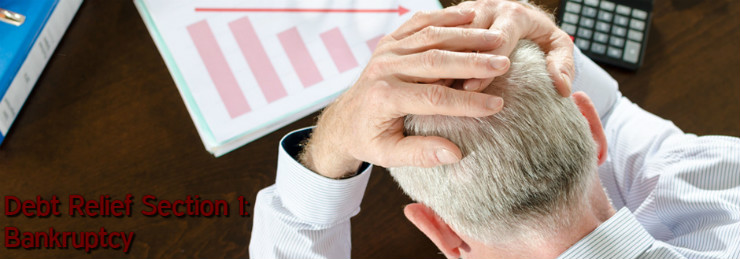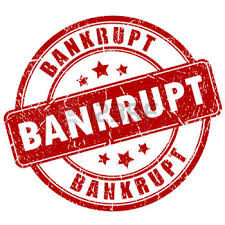Are you one of the millions of Americans that are feeling the pressure from late payments, collection agencies, law firms, or even the IRS because of financial troubles? If so, you may be too nervous to take action and start reversing your fortune. However, it is crucial that you do not let fear or procrastination govern your decision-making process. The longer you wait, the more dire your situation becomes.

Many people suffer from financial mistakes early on in life, but using some of these various debt relief options, they are able to pay off all of their debt and start living a rich life once again, in both the financial and figurative sense. Here, we will outline all of your different options for debt relief.
Bankruptcy is a process in which an individual (or a company, but corporate bankruptcy is outside the scope of this article) is given forgiveness for all of their debts. There are two types of bankruptcy filings for individuals, Chapter 7 and Chapter 13.
Chapter 7 bankruptcy discharges all debts from the record and you are no longer required to repay any of them. However, if you do possess assets, some may be sold to pay your creditors and other fees associated with the fililng. Under U.S. law, you are entitled to $16,500 in equity in your home and $2,575 in equity in your car, and double that if you are married. Why doesn’t everyone do Chapter 7? If your income is above a certain level, you do not qualify for Chapter 7.
With Chapter 13 bankruptcy, the filing individual does not receive total exoneration from their debts; rather, a payment plan is set up to pay off creditors slowly and without the egregious interest that has been holding the debtor back from repayment. Chapter 13 bankruptcy requires that the filer’s debt is below a certain threshold, which is constantly updating. A three-to-five year repayment plan is put together to pay the creditors. The unfortunate truth is most people don’t succeed with Chapter 13; they end up having to file a Chapter 7 after failing on their payments. 
However, bankruptcy does not come witout its consequences. As you may already know, bankruptcy may be a huge black eye for as long as 7 to 10 years on your credit report. While you will immediately improve your credit score and start receiving offers for basic high-risk credit lines the second you remove the debts from your ledger, the consequences that come along with the bankruptcy are vast. For example, bankruptcy remains on your credit report for 7 to 10 years, depending upon which chapter of bankruptcy you file under. For example, Chapter 7 (the most common) is on your credit report for 10 years, while a Chapter 13 filing (second most common) is there for seven years. During this time, it could prevent you from obtaining new credit lines or it may cause employers to not hire you. Forget about buying a home any time soon!
If you are even considering bankruptcy, it is likely that your credit report and credit lines are extremely damaged. Thus, there may not be much of a negative change due to the bankruptcy black mark, because your credit report was going to be poor anyways, and for a long time. Many experts believe it may be beneficial only if you have more than $15,000 in debts.
The best solution is always to avoid filing bankruptcy, if possible. In the next section, we will review debt consolidation plans that can allow you to avoid bankruptcy, save your financial situation, and make good to your creditors.
Debt Relief – Bankruptcy

